Get your child to STOP engaging in the online activities that are uncomfortable or hurtful.
What is cyberbullying?
Cyberbullying is bullying that occurs when online technology (e.g. mobile phones, computers, or social media) is used as a means to hurt or upset someone on purpose and repeatedly*.
*Sharing and/or resurfacing a single post is also a form of repetition
Cyberbullying can be in the form of


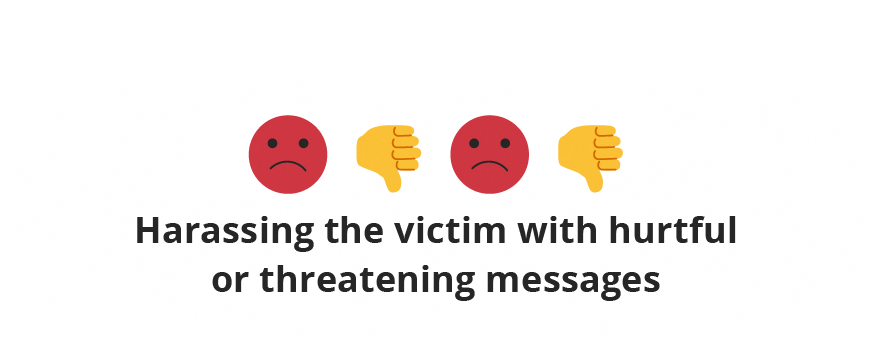
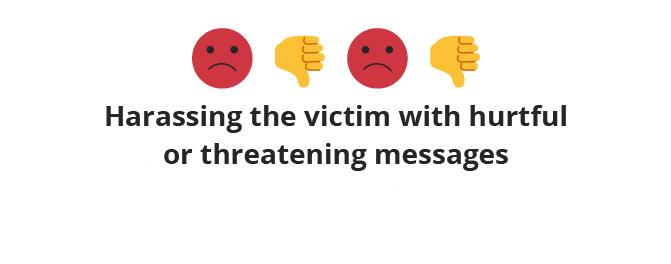







How can you tell if your child is being cyberbullied?
Here are some signs you can look out for:

-
Becomes upset or anxious, especially when receiving messages or using digital devices
-
Has persistent stomach aches and headaches
-
Becomes unusually angry, nervous, or depressed
-
Deletes their social media accounts
-
Stops using digital devices
-
Becomes distant from family and friends
-
Feels uneasy about going out
(e.g. to school or social gatherings)
-
Spends less time on the activities they used to enjoy
-
Loses confidence in studies or activities they used to enjoy
-
Experiences a sharp fall in academic performance
What should you do if your child is exhibiting signs of being cyberbullied?
While it is normal to get upset at the thought of your child being cyberbullied, try to stay calm. Even if you notice your child displaying signs of being cyberbullied, it does not necessarily mean that they are.
Have a conversation with your child to find out more and understand what they are experiencing. Communicating well with your child assures them that they are not alone and have a good support network they can depend on.
You can try saying:
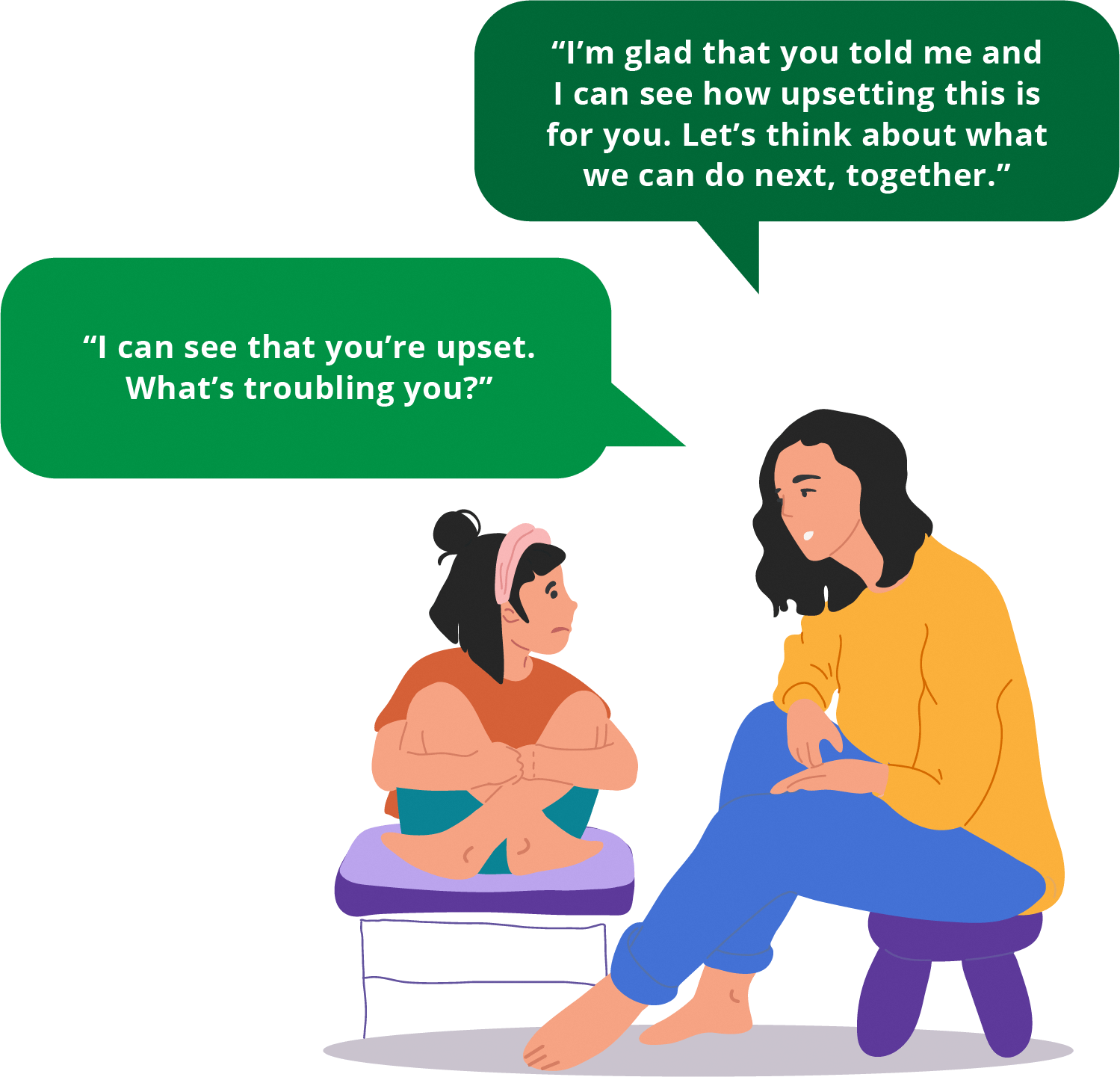
You can try saying:
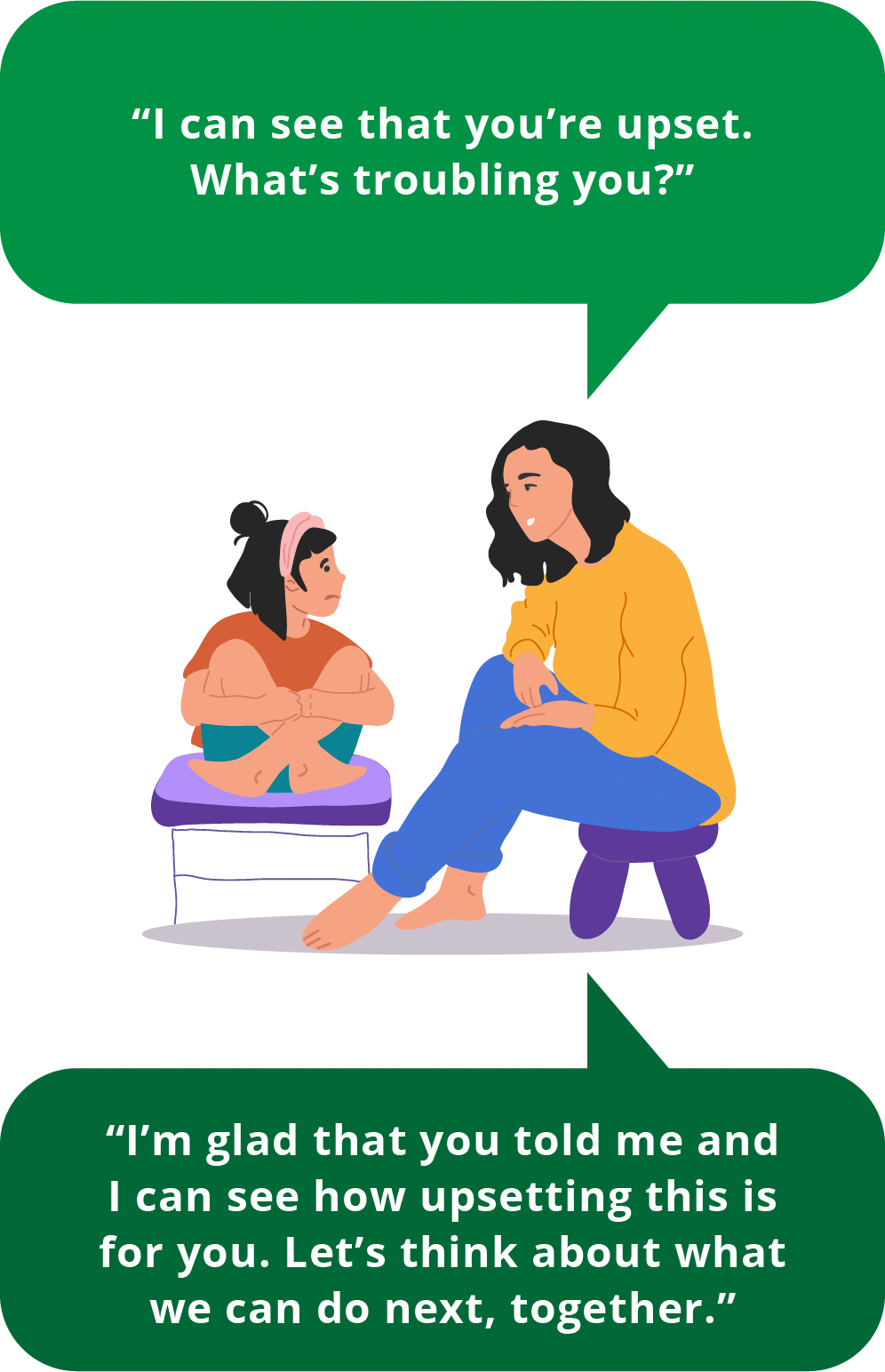
You can also use CHEER to help guide your conversation.






Calm them down
Speak in a gentle tone. If needed, you can ask them to have a seat and take a few moments to relax. It is natural for you to also be emotional when suspecting that your child is being bullied.
As feelings can be contagious, you should take some time to calm yourself down before speaking with your child.
To start the conversation, you can try saying:


Hear them out
Lend them a listening ear to understand their perspective. It may be difficult for your child to start telling you what happened. To help them feel at ease, explain that you would like to understand their worries better and help them through their difficulties.
For example, you can say:
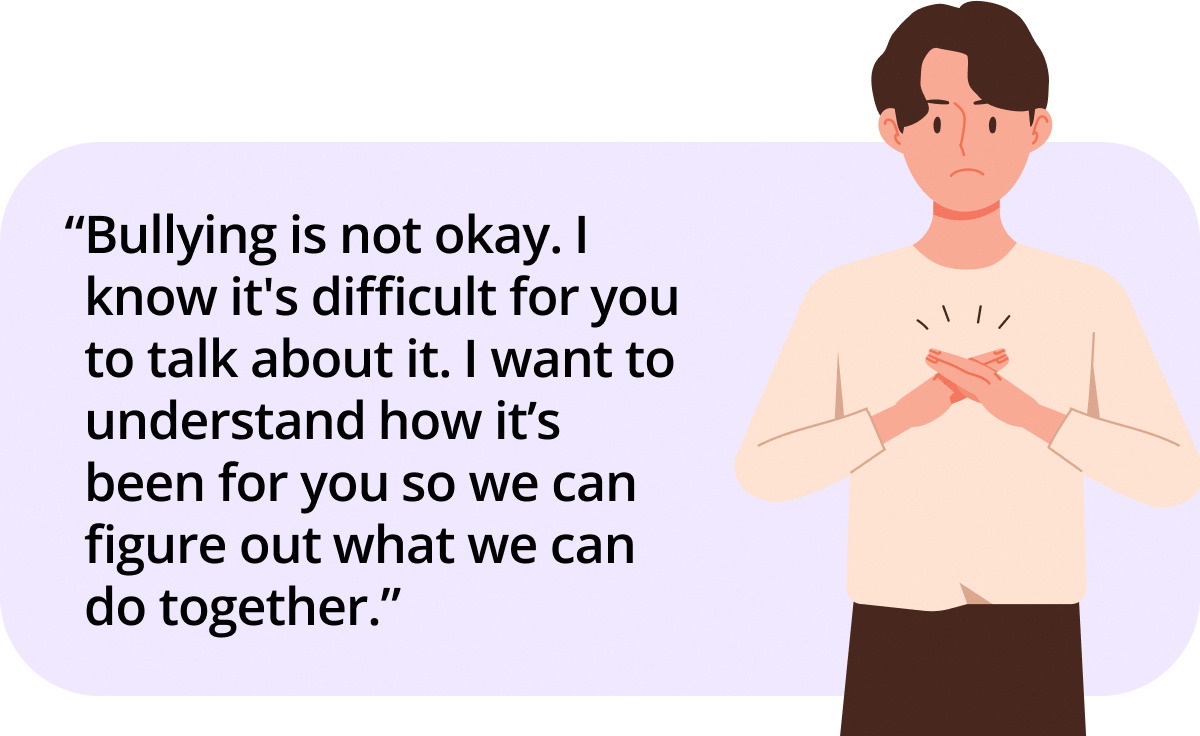

Empathise with their feelings
By acknowledging their feelings, you can reassure your child that they are heard and cared for. You can then offer ways for them to effectively communicate their feelings to those causing them distress.
For example, you can say:
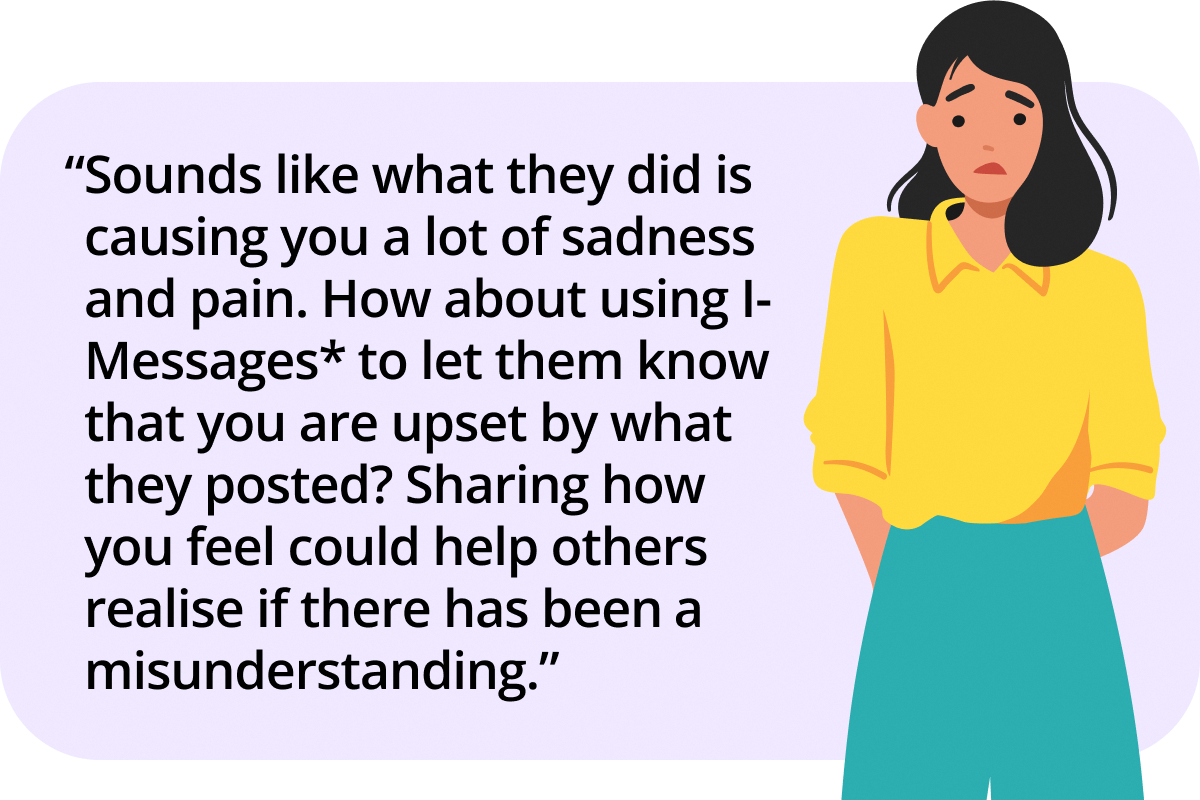
*At primary 3, students learn about I-Messages in school during their Character and Citizenship Education (Form Teacher Guidance Period) lessons. I-Messages are used to communicate one's feelings and needs to others clearly and respectfully.
For example,
“I felt upset [feeling] when you posted
that photograph of me making a funny face together with a
caption that made me look silly [upsetting action done by
others]. I would like it if you remove the photo [suggested
solution], please.”

Encourage them to seek help
If you feel that the problem may be larger than what your child can manage on their own, especially after hearing them out, you can recommend reaching out for additional support.
For example, you can say:


Reassure them
Let them know that you will always be there to support them and listen to their problems.
For example, you can say:

If your child does not want to talk about their problem, it may be because they are afraid of getting someone into trouble or that the bullying situation might become worse. Reassure them that you only wish to have a better understanding of the situation and keep them safe.
Remind them that reaching out for help is not a sign of weakness, but instead a sign of resilience and courage.
How can your child deal with cyberbullying?
Advise your child to remain calm and not respond to the cyberbully immediately. Recommend that they take a break from their social media account(s) or text messaging applications, to have some time away from the bully.
After your child has calmed down, you can encourage them to use I-Messages to let the cyberbully know they are upset by what had been posted or said online.

After your child has calmed down, you can encourage them to use I-Messages to let the cyberbully know they are upset by what had been posted or said online.
You can also guide your child to apply the STOP, SAVE, BLOCK, TELL, REPORT strategy to deal with cyberbullying incidents.

Stop
Save
Get your child to SAVE and pass all offensive and hateful emails, instant messages, or text messages (both hardcopy and softcopy) to a trusted adult. These can be produced as evidence of cyberbullying in the future.


Block
Get your child to cut off all communication with the cyberbully. They can consider using available features to BLOCK specific people in their contacts.
Tell
Affirm your child when they TELL you, another trusted adult (such as teachers), or even close friends about the situation.
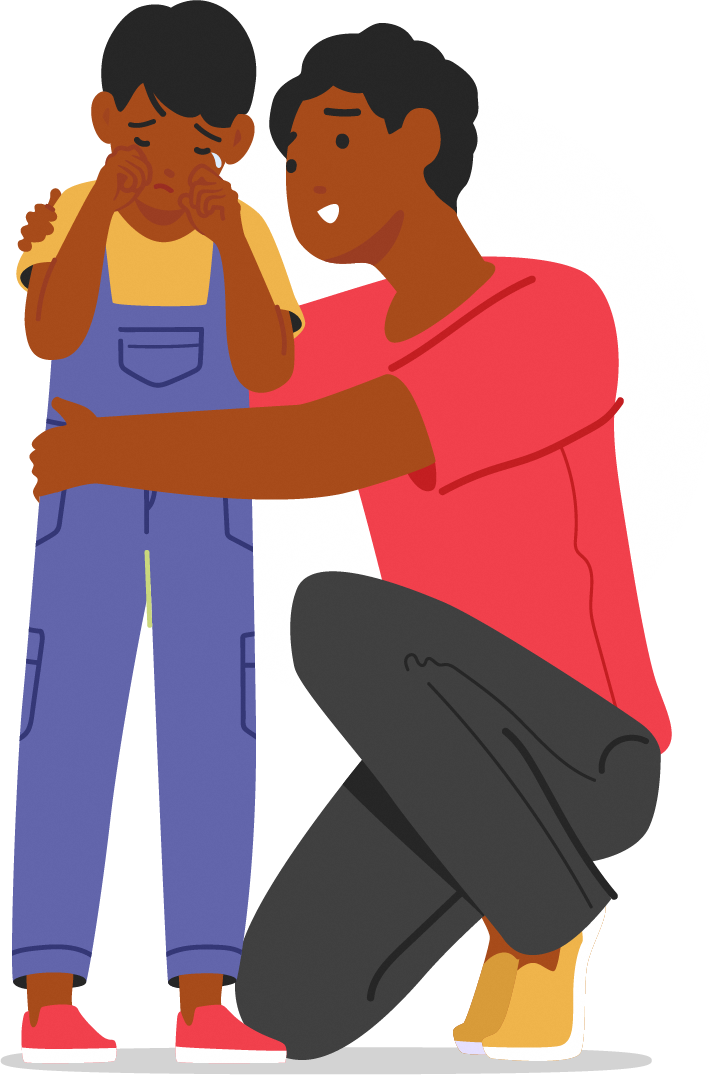

Report
Guide your child in using social media self-reporting features to combat the cyberbullying and online harassment. If their personal safety or reputation is threatened, REPORT the case to the police together.
You can also guide your child to apply the STOP, SAVE, BLOCK, TELL, REPORT strategy to deal with cyberbullying incidents.

Stop
Get your child to STOP engaging in the online activities that are uncomfortable or hurtful.
Save
Get your child to SAVE and pass all offensive and hateful emails, instant messages, or text messages (both hardcopy and softcopy) to a trusted adult. These can be produced as evidence of cyberbullying in the future.


Block
Get your child to cut off all communication with the cyberbully. They can consider using available features to BLOCK specific people in their contacts.
Tell
Affirm your child when they TELL you, another trusted adult (such as teachers), or even close friends about the situation.


Report
Guide your child in using social media self-reporting features to combat the cyberbullying and online harassment. If their personal safety or reputation is threatened, REPORT the case to the police together.

You can also inform your child's school of the situation, where relevant. When schools are aware of a bullying incident, they will:
Ensure the safety and emotional well-being of the students involved
Investigate the reported cases thoroughly to gather facts and understand the underlying cause

Guide the bullies to learn from their mistakes and be kind to others (if they are from the same school)
Educate bystanders on how to stand up against bullying and show support to victims
Support and guide the victim to develop skills, such as assertiveness, and build up the courage to seek help
Provide necessary counselling to the affected students

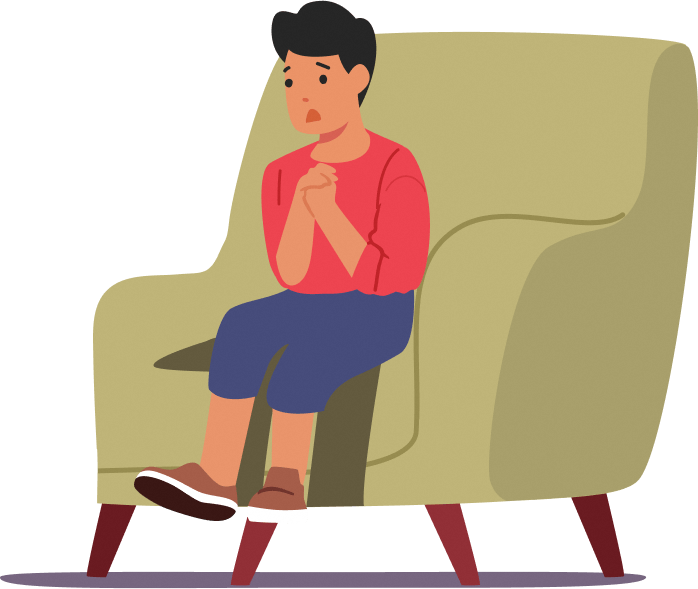
Address and restore the affected relationships (if the bullies and victims are from the same school)
Monitor students to prevent the incident from developing into a bigger problem

Work with parents to address the bullying and build the characters of the students involved
Ensure the safety and emotional well-being of the students involved
Investigate the reported cases thoroughly to gather facts and understand the underlying cause

Guide the bullies to learn from their mistakes and be kind to others (if they are from the same school)
Provide necessary counselling to the affected students


Educate bystanders on how to stand up against bullying and show support to victims
Support and guide the victim to develop skills, such as assertiveness, and build up the courage to seek help
Address and restore the affected relationships (if the bullies and victims are from the same school)

Monitor students to prevent the incident from developing into a bigger problem
Work with parents to address the bullying and build the characters of the students involved
Empower Your Child to Overcome Cyberbullying
You can further help your child overcome cyberbullying by reminding them that they have strengths which they can tap on to overcome difficulties. These strengths can be their values, beliefs and attitudes (I Am), skills and strategies (I Can), as well as a caring and supportive environment (I Have). These will prepare them to deal with adversities.
Visit resource

Building and strengthening resilience in your child
Module 5A

